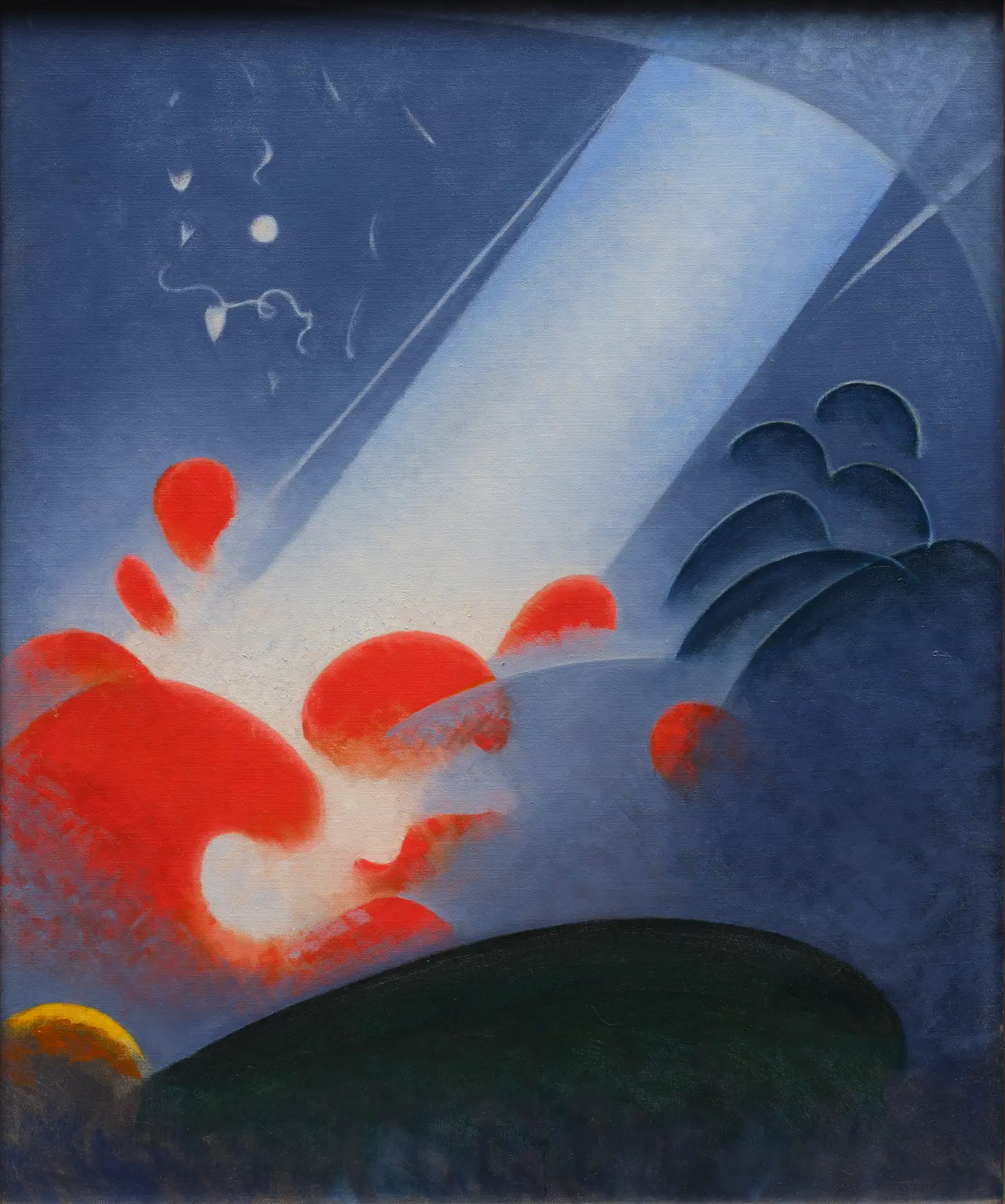Agnes Pelton
Agnes Pelton was an American visionary painter whose transcendental symbolism depicted spiritual realities beyond the world of physical appearances. Her esoteric perceptions and beliefs, including Theosophy and its branch, Angi Yoga, took shape in abstract forms, delicate shimmers of light, and evocations of sceneries that edged into metaphysical territories, wrapped in the energies that animate life and consciousness. An emphasis on the unknown and emotive undercurrents of our world is illuminated in the artist’s painterly mysticism.
Known as a ‘desert transcendentalist’, Pelton chose to live away from the major urban centres, instead moving to Water Mill, Long Island, from 1921 to 1932, and later settling in Cathedral City, a small community near Palm Springs, California. The southwestern landscape of Cathedral City became instrumental in Pelton’s visual language that reflected the desert’s mysterious and solitary character. Relatively unknown during her lifetime, Pelton’s work is finally gaining long-overdue recognition, with the delicate and luminous spirituality of her oil paintings continuing to captivate contemporary audiences.
Red and Blue/K.T. (1946) is exemplary of the period following Pelton’s move to Cathedral City. The ephemeral quality of light in shades of red and blue suggests a landscape that transcends earthly boundaries. The rhythm of spiritual movement in the work has a sensual, almost divine quality, where life is blooming, illuminated by a ray of light that pierces through abstracted ideals. As a symbolist painter, Pelton infused her paintings with signs and symbols whose decoding requires an exoteric survey of sensations and affects.
The cryptic “K.T.” in the title refers to the letters found carved into the painting’s stretcher bars. Their meaning was unknown until the recent digitalisation of Pelton’s archive, which revealed that “K.T.” stoof for Kath Taylor, a woman Pelton met at the Hotel El Encanto in Santa Barbara in September 1946. Though the nature of their encounter remains unknown, this marked the first time Pelton titled the piece after another individual. The viewer is left with ephemeral clues – whether pointing to a real or imagined connection – transfixed by the mystery of Pelton’s world.
